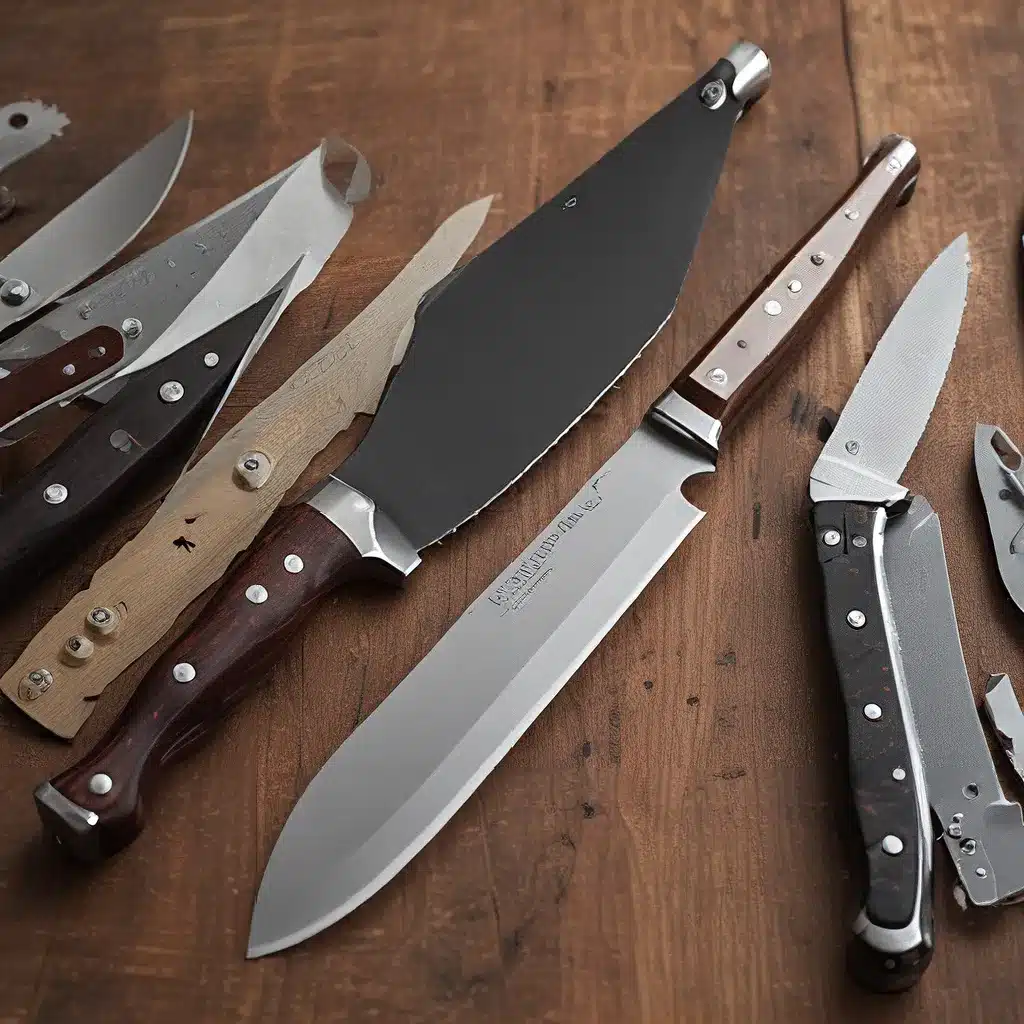
As a self-proclaimed knife enthusiast, I’ve spent countless hours honing my sharpening skills and perfecting the art of achieving razor-sharp edges. Whether you’re a professional chef, an avid outdoor enthusiast, or simply someone who appreciates the value of a well-maintained blade, learning the secrets of knife sharpening can be a game-changer.
In this article, I’ll share the insider tips and proven techniques that I’ve gathered over the years, from my own experiences and from the wisdom of seasoned sharpening experts. By the end, you’ll have the knowledge and confidence to transform even the dullest knives into precision cutting tools that will make any task a breeze.
Understanding Blade Steel: The Key to Unlocking Sharpness
One of the fundamental aspects of knife sharpening is understanding the properties of the blade steel. Different steel compositions, like 440C, AUS-8, 8Cr13MoV, and D2, each have their own unique characteristics that can affect how they respond to the sharpening process.
For example, D2 steel is known for its excellent edge retention and durability, but some users have reported difficulty in achieving a true razor-sharp edge on these blades. As one Redditor shared, “I don’t have a ton of different blade steels, but for some reason, I can’t get the D2 blades razor-sharp, even though I do the same thing I do with the other steels and get better results with those. What could be my issue?”
The key to unlocking the sharpness potential of D2 steel, as well as other challenging blade materials, lies in understanding the nuances of their heat treatment, carbide distribution, and overall hardness. By tailoring your sharpening technique to the specific properties of the steel, you can unlock its full sharpness potential.
The Sharpening Ritual: Mastering the Fundamentals
Sharpening a knife is not just a routine chore; it’s a ritual, a dance between you and the blade that requires patience, precision, and a deep understanding of the process. Whether you’re using a whetstone, a sharpening rod, or an electric sharpener, the fundamentals remain the same.
One of the most crucial aspects is maintaining the proper sharpening angle. As the experts advise, the optimal angle can vary depending on the knife’s intended use, with kitchen knives typically requiring a 15-20 degree edge, and outdoor/utility knives benefiting from a 20-25 degree edge.
But the angle is just the beginning. You also need to master the sharpening motion, ensuring that you apply even pressure, maintain a consistent angle, and work the blade in a smooth, fluid manner. Rushing through the process or applying uneven pressure can lead to uneven edges and potentially even damage the blade.
Unlocking the Secrets of Razor-Sharp Edges
Once you’ve mastered the fundamentals, it’s time to dive deeper into the secrets of achieving true razor-sharpness. This is where the nuances of the sharpening process really come into play, and where the skills of a seasoned sharpener can truly shine.
One of the key techniques is micro-beveling, a process where you create a secondary bevel at a slightly steeper angle than the primary edge. This helps to strengthen the edge and prevent it from becoming too fragile, especially on harder steels like D2.
Another crucial step is stropping, which involves polishing the edge on a leather or fabric surface. This can help to refine the microscopic serrations along the blade’s edge, creating an incredibly smooth and sharp cutting surface.
But what if you’re still struggling to get that razor-sharp finish, even after trying all the right techniques? This is where understanding the unique properties of the steel can be a game-changer. As the Redditor mentioned, the D2 steel can be particularly challenging to sharpen to a true razor’s edge.
In these cases, you may need to experiment with different sharpening tools, adjust your sharpening angles, or even consider professional sharpening services to get the best possible results. The journey to achieving razor-sharpness is not always linear, but the rewards of mastering this skill are unparalleled.
Maintaining that Razor’s Edge: Consistent Care and Upkeep
Of course, the journey doesn’t end once you’ve achieved that perfect, razor-sharp edge. Maintaining your knives and ensuring they stay that way is a crucial part of the process.
Regular honing with a sharpening steel or ceramic rod can help to keep your blades in top condition, extending the time between full sharpening sessions. And when it comes time to re-sharpen, be sure to follow the same careful techniques you’ve mastered, adjusting as necessary to account for any changes in the blade’s condition.
It’s also important to store your knives properly, protecting the edges from damage and keeping them clean and dry. A good quality knife block or sheath can go a long way in preserving your blades’ sharpness.
Embrace the Journey: Sharpening as an Art Form
Knife sharpening is not just a practical skill; it’s an art form, a testament to your dedication and appreciation for the tools you wield. Whether you’re a professional chef, an avid outdoorsman, or simply someone who loves the feel of a well-crafted blade, the journey to achieving razor-sharp edges is one that is full of discovery, challenge, and immense satisfaction.
So, embrace the process, experiment with different techniques, and never stop learning. The more you invest in honing your sharpening skills, the more you’ll be rewarded with the precise, effortless cutting performance that can only come from a truly razor-sharp knife.


